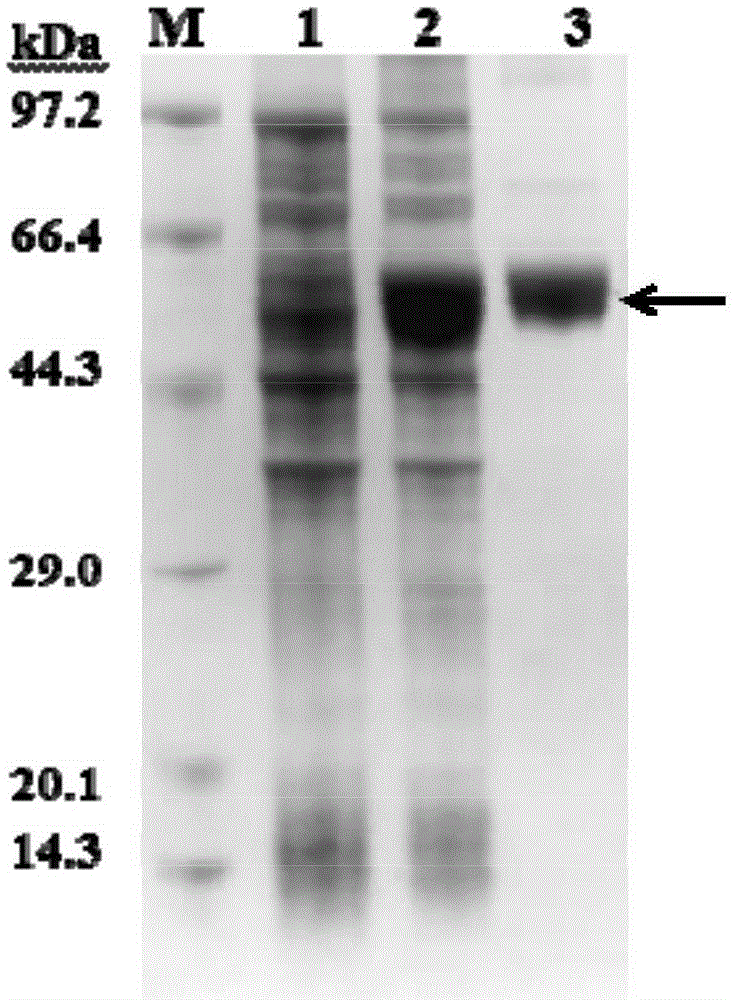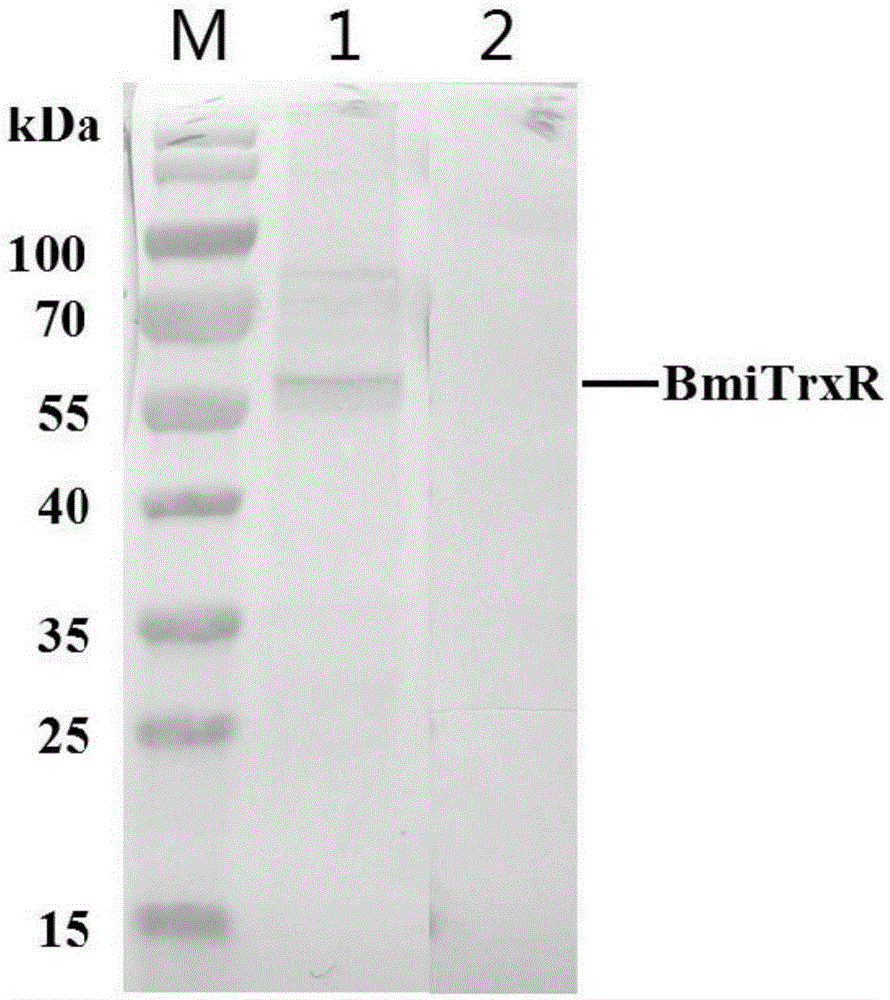Babesia microti thioredoxin reductase molecule, and gene and applications thereof
A technology of babesia thioredoxin and thioredoxin, applied in the field of bioengineering
- Summary
- Abstract
- Description
- Claims
- Application Information
AI Technical Summary
Problems solved by technology
Method used
Image
Examples
Embodiment 1
[0034] Example 1 Gene Cloning and Sequence Analysis of Babesia microti thioredoxin reductase molecule (BmiTrxR)
[0035] 1. Materials and methods
[0036] 1.1. Parasites
[0037] Babesia vole is quoted from the American Type Culture Collection (ATCC), numbered ATCC R PRA-99TM was inoculated and preserved in Kunming mice in our laboratory.
[0038] 1.2. Bacteria and plasmids
[0039] Escherichia coli Top 10 cells (Invitrogen) and Escherichia coli BL21(DE3) (Novagen) were used for plasmid construction and protein expression. The cloning and sequencing vector used pGEM-T Easy (Promega), and the expression vector used pET28a vector (Novagen).
[0040] 1.3. Molecular cloning of Babesia microti thioredoxin reductase (B.microti TrxR)
[0041] TRIzol reagent (Invitrogen) was used to extract the RNA of merozoites, and then the RNA was digested with DNase I (TOYOBO) to remove the genomic DNA. cDNA was obtained from total RNA of parasites by reverse transcription, and the whole st...
Embodiment 2
[0044] Example 2 Recombinant expression and purification of Babesia microti thioredoxin reductase molecule (BmiTrxR)
[0045] The full-length BmiTrxR gene was double-digested by NcoI and XhoI restriction sites, then subcloned into the expression vector pET-28a (Novagen), and sequenced to ensure the accuracy of the sequence. The full-length gene was expressed in E.coliBL21(DE3) by constructing a His-tagged protein. The expression bacteria were induced by 1mM IPTG, and after incubation at 16°C for about 12 hours, the cells were collected and stored at -80°C. Recombinant protein through Ni 2+ Purified with affinity resin (Novagen), the induced cells were resuspended with binding buffer (NI-NTA Buffer Kit, Novagen), then ultrasonically disrupted, centrifuged at 12,000×g, 4°C for 10 min, and the soluble supernatant was loaded into the purification resin, then washed twice with washing buffer, and finally the target protein was eluted with elution buffer (NI-NTA Buffer Kit, Novage...
Embodiment 3
[0047] Preparation of embodiment 3 recombinant protein BmiTrxR antiserum and Western Blotting detection
[0048] After the purified recombinant protein is mixed with complete adjuvant, mice are immunized by intraperitoneal injection (about 200g recombinant protein each), and then these mice are boosted once every two weeks, twice in total, and the recombinant protein needs to be used Incomplete adjuvant premix. Mouse blood samples were collected by orbital bleeding, and antibody titers were detected by ELISA.
[0049] Mouse red blood cells infected with Babesia microti and uninfected mouse red blood cells were mixed with equal amount of 2×SDS gel-loading buffer, and then boiled for 10 minutes to denature the protein. After gel electrophoresis on 12% SDS-PAGE, it was transferred to NC membrane and blocked overnight at 4°C with 5% skimmed milk. The blocked NC membrane was incubated with recombinant protein antiserum (diluted 1:200) at room temperature for 1 hour, and then wash...
PUM
| Property | Measurement | Unit |
|---|---|---|
| Molecular weight | aaaaa | aaaaa |
| Extinction coefficient | aaaaa | aaaaa |
Abstract
Description
Claims
Application Information
 Login to View More
Login to View More - R&D
- Intellectual Property
- Life Sciences
- Materials
- Tech Scout
- Unparalleled Data Quality
- Higher Quality Content
- 60% Fewer Hallucinations
Browse by: Latest US Patents, China's latest patents, Technical Efficacy Thesaurus, Application Domain, Technology Topic, Popular Technical Reports.
© 2025 PatSnap. All rights reserved.Legal|Privacy policy|Modern Slavery Act Transparency Statement|Sitemap|About US| Contact US: help@patsnap.com



